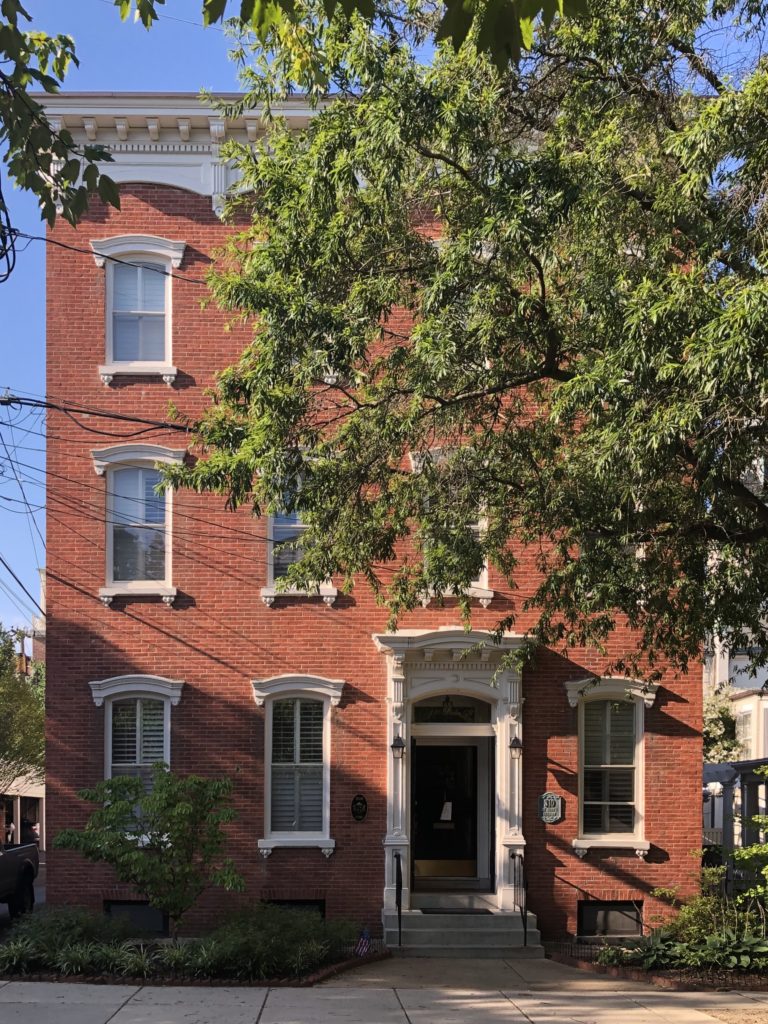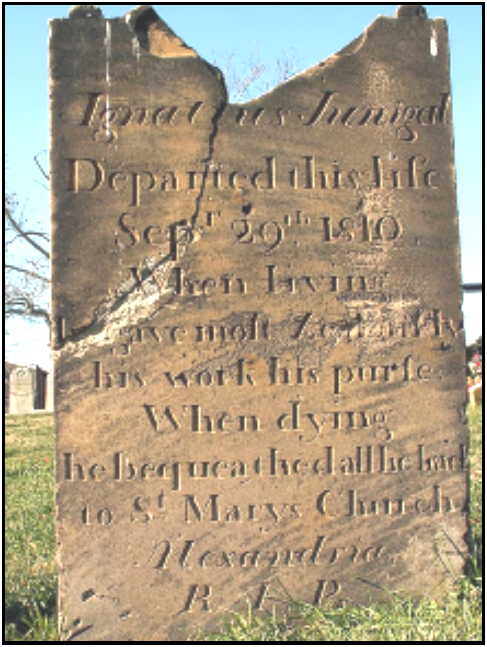“From the Archives” The History of Our Rectory

 During its early years, Saint Mary did not have a residence – or rectory – for its clergy.
During its early years, Saint Mary did not have a residence – or rectory – for its clergy.
From historic Jesuit records, we know that priests from Maryland and, after 1789, from Georgetown, visited Alexandria and stayed with families in the city or at Rozier’s Bluff, across the Potomac River on Oxon Hill. Mass was celebrated in private homes. Julia Kerr, who lived in Alexandria when the parish was founded, recalled attending Mass at a small house in the 700 block of Prince Street belonging to Robert and Mary Ann Slaughter Patton, among Saint Mary’s original parishioners.
Father John Thayer, who headed Alexandria’s Catholic mission in 1794, was at Notley Hall on Rozier’s Bluff when he wrote a letter to Bishop John Carroll, dated April 10, 1795, requesting that Alexandria be granted its own parish. He would have had a great view of our area at the time – no Woodrow Wilson Bridge or ferris wheel to block it!
Another early document reports the priest serving Alexandria had a house at the corner of Pitt and Wolfe streets. There are several references to this house being used for Mass. In 1810 the parish purchased property on Duke Street, between Fairfax and South Royal Streets, from the local Methodist congregation. Just east of the present rectory and known as Chapel Alley, it included a meeting house and a small parsonage. The parsonage was enlarged and a cross and bell placed on top to clearly identify it as a church. Saint Mary was able to buy the property because an elderly parishioner, Ignatius Junigal, generously left the church $3,000 in his will. He died on September 29, 1810, and his tombstone reads: “When dying he bequeathed all he had to St. Mary’s Church.”

This original rectory was home to Saint Mary’s priests until 1877 when it was said to be “hardly inhabitable” and was razed. Father Denis J. O’Kane, pastor from 1872-91 and the last Jesuit to serve here, built a large, new townhouse at 310 Duke Street – the current rectory. The stately, three-story Federal building is an elegant example of American 19th century architecture. It has been remodeled a number of times, including renovations done by Father Thomas A. Rankin, pastor from 1930-42.
Monsignor Frank Hendrick, pastor from 1981-91, made major changes to accommodate 20th century technology. At one time, a small office for staff, a parlor and room for priests to meet with parishioners were the only necessities for the day-to-day operations of a parish. By the 1980s, a modern, growing parish required space for computers, other office equipment and additional employees. Monsignor Hendrick moved the kitchen and dining room upstairs to the second floor to accommodate these needs.
In recent years, parish staff working in the rectory have moved across the street to the Lyceum at 313 Duke Street. Today, the rectory once again serves its initial and primary purpose – a home for our priests, seminarians and occasional visiting clergy.
– Kitty Guy, Parish Historian
Throughout 2020, the Basilica of Saint Mary will present “From the Archives.” It is a weekly feature online and in our bulletin spotlighting the history of the parish. All of our “From the Archives” features are located here.